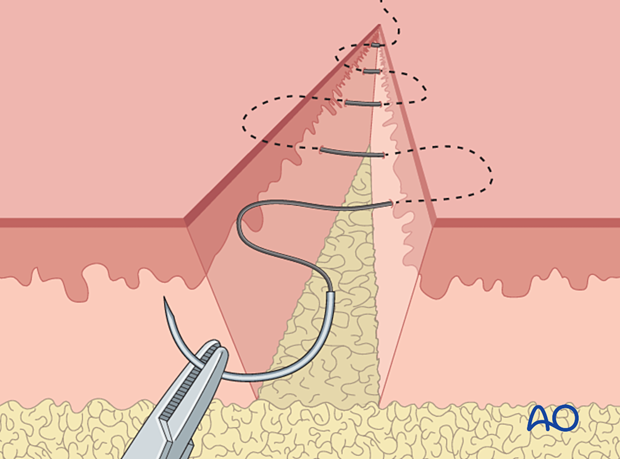Anterolateral approach to the pediatric distal tibia
1. General considerations
Introduction
The anterolateral approach is useful for the treatment of most distal tibial fractures that extend laterally.

Surgical approach
Most distal tibial fractures are approached either anteromedially or anterolaterally. The size of the anterolateral fragment helps to determine the optimal approach.
When the fragment is large and the medial fracture plane is at or near the medial malleolus, an anteromedial approach is recommended.
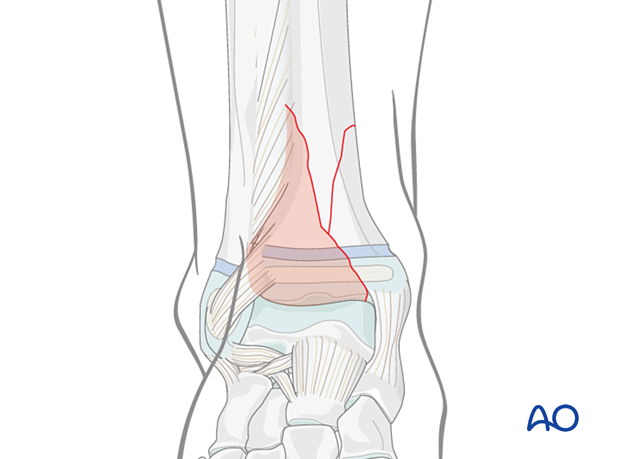
When the anterolateral fragment is smaller and the fracture reaches the articular surface more laterally, reduction can be achieved with an anterolateral approach.
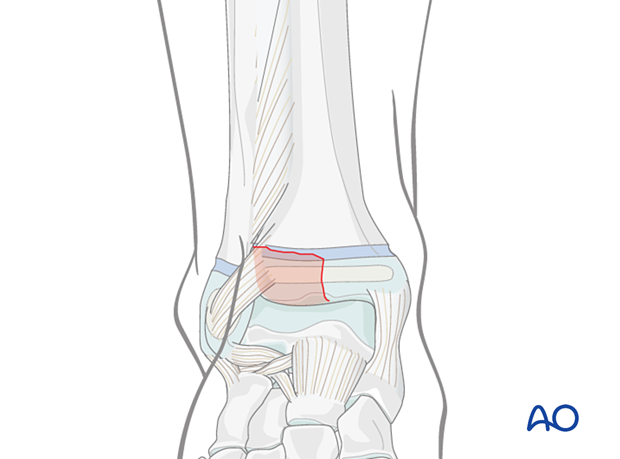
Precautions
If there is significant swelling, surgery should be delayed until it resolves.
Minimal exposure and careful handling of the periosteum are essential to prevent further soft-tissue damage.
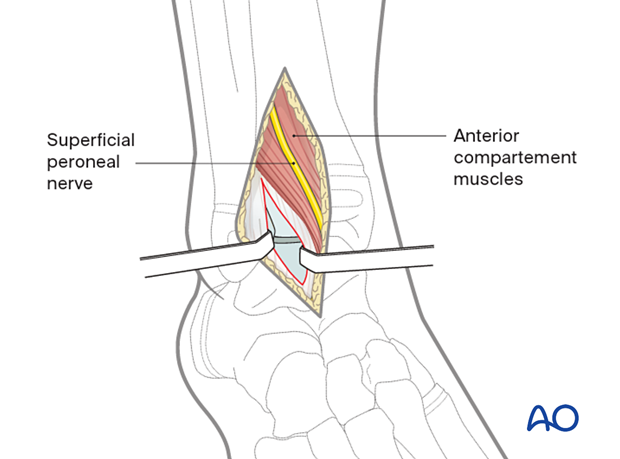
2. Skin incision
Incise the skin, centered over the fracture, in a straight line between the tibia and fibula in line with the fourth metatarsal.
The length of the incision depends on the position of the fracture, implant and leg size.
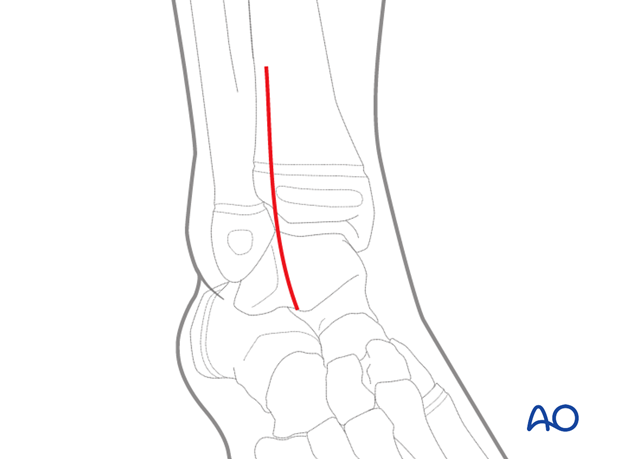
3. Surgical dissection
Dissection through the skin and subcutaneous tissues should preserve full-thickness skin flaps.
Deepen the dissection through the extensor retinaculum avoiding injury to the anterior compartment tendons, which should be retracted medially.
If a more proximal extension is needed, the anterior compartment muscles, including peroneus tertius, can be mobilized and retracted.

4. Wound closure
After careful hemostasis, close the subcutaneous tissue and skin separately. Subcuticular, absorbable skin sutures may be used if the condition of the soft tissues permit it.
